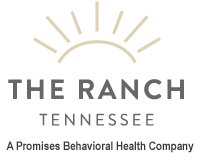PTSD, or post-traumatic stress disorder, is a mental health condition that can have long-lasting effects on an individual’s life. It often results from experiencing or witnessing traumatic events. People who suffer from this condition live in fear, experience depression, and can develop unhealthy coping mechanisms such as drug or alcohol use to deal with their symptoms.
Though the PTSD recovery process differs for everyone, it may help individuals achieve lasting relief. Recovery Ranch provides comprehensive treatment for those struggling with co-occurring addiction and mental health disorders like PTSD. The experienced professionals in our PTSD treatment center offer personalized care to help individuals gain control over their lives. Call 1.844.876.7680 today to learn more about how we can help.
What Is PTSD?
Post-traumatic stress disorder (PTSD) is an anxiety disorder that can develop after exposure to a traumatic event, such as combat, sexual assault, or a natural disaster. Some of the main symptoms include:
- Anxiety
- Depression
- Intrusive thoughts
- Nightmares
- Flashbacks
- Severe emotional distress
- Hypervigilance
- Insomnia
People with PTSD may experience extreme fear and helplessness, have difficulty sleeping and concentrating, or feel detached from their surroundings. They often feel irritable or on edge and may be prone to outbursts of anger. Other symptoms include:
- Drastic changes in mood
- Difficulty maintaining relationships
- Recurring intrusive thoughts about the trauma
- Avoiding reminders of the trauma
- Loss of interest in activities that were once enjoyable
- Memory problems
PTSD can occur at any age and affect people differently depending on their circumstances and backgrounds. Roughly half of all American women and men will experience traumatic situations associated with the later onset of post-traumatic stress disorder.
The PTSD Recovery Process
You might wonder how to recover from PTSD. The PTSD recovery process typically involves a combination of therapy, medication, and lifestyle changes.
In terms of treatment, psychotherapy can help individuals cope with their symptoms. Cognitive-behavioral therapy (CBT) is particularly beneficial in assisting people in identifying and challenging negative thoughts and beliefs that may lead to further distress.
Other specialized treatments can also be helpful in the recovery process, such as:
- Eye movement desensitization and reprocessing (EMDR)
- Dialectical behavior therapy (DBT)
- Acceptance and commitment therapy (ACT)
Medication may be vital in treating PTSD by reducing symptoms. Common types of medicines used for PTSD include antidepressants such as SSRIs or SNRIs and anti-anxiety medications like benzodiazepines.
Lastly, treatment professionals recommend lifestyle modifications, such as regular exercise, healthy eating habits, and relaxation. These beneficial changes can help people with PTSD manage uncomfortable emotions and build resilience skills.
What Are PTSD Remission Rates?
When it comes to recovering from PTSD, professional treatment is essential. Though possible, it is unlikely that individuals will recover naturally or on their own. Therefore, all affected individuals should seek prompt treatment from qualified mental health professionals.
Once a person completes a treatment program, they are in remission. People diagnosed with PTSD fairly soon after developing their symptoms typically have higher recovery rates than those diagnosed after exhibiting symptoms for extended amounts of time.
Enroll in a PTSD Treatment Center at Recovery Ranch
Reaching out for help can be difficult for those suffering from PTSD and addiction. Our experienced clinicians at Recovery Ranch make the process as easy as possible. We provide comprehensive assessments to understand each individual’s unique needs and customize treatment plans to meet those needs, helping individuals achieve lasting recovery and wellness.
If you or someone you know is struggling with PTSD or addiction, don’t wait another moment to get help at Recovery Ranch. Our compassionate staff is available 24/7 to answer your questions about how we can help you find sobriety and peace of mind. Contact us today at 1.844.876.7680 or complete our online form to begin your journey toward a higher quality of life.

